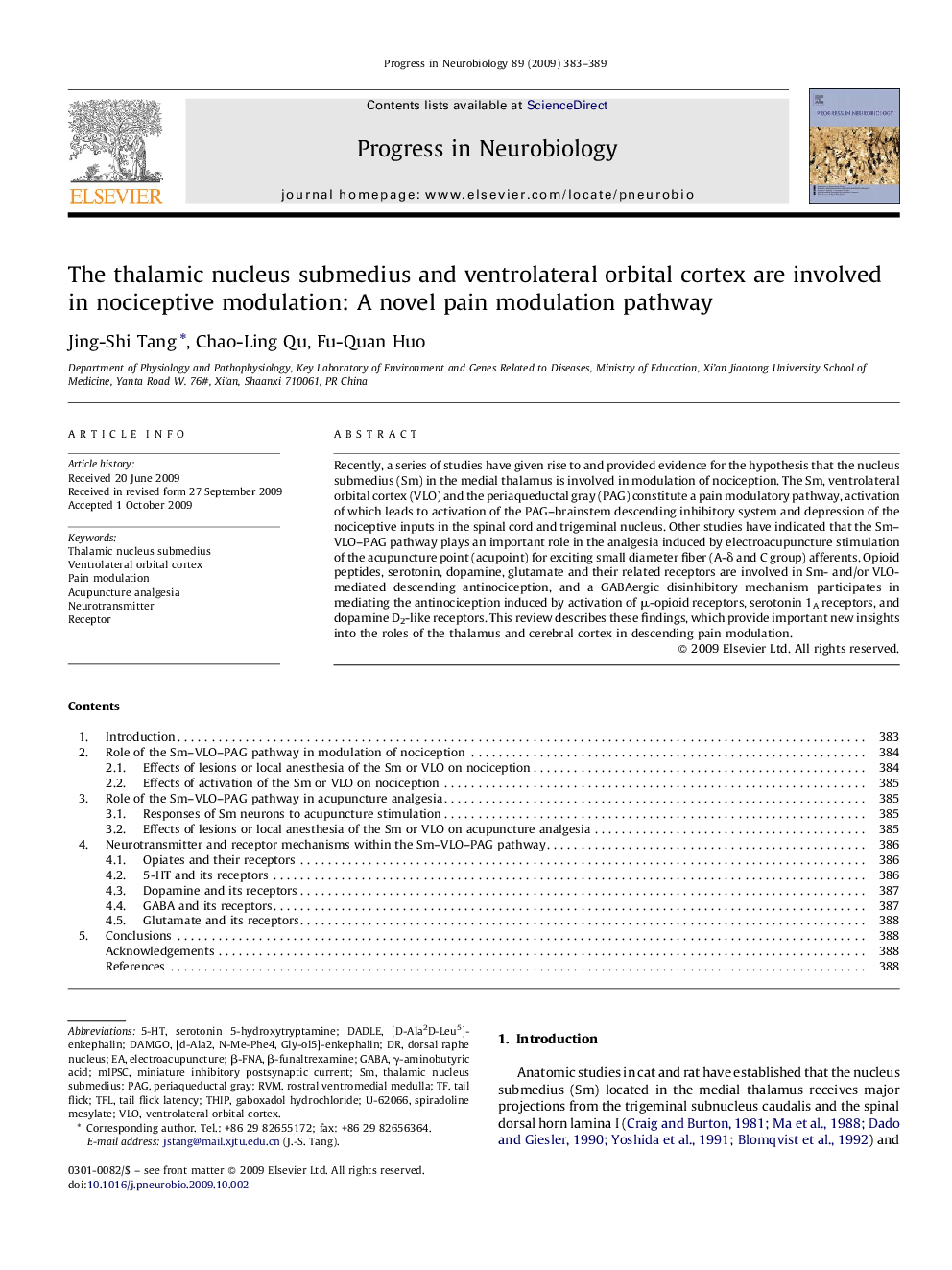| Article ID | Journal | Published Year | Pages | File Type |
|---|---|---|---|---|
| 4353778 | Progress in Neurobiology | 2009 | 7 Pages |
Recently, a series of studies have given rise to and provided evidence for the hypothesis that the nucleus submedius (Sm) in the medial thalamus is involved in modulation of nociception. The Sm, ventrolateral orbital cortex (VLO) and the periaqueductal gray (PAG) constitute a pain modulatory pathway, activation of which leads to activation of the PAG–brainstem descending inhibitory system and depression of the nociceptive inputs in the spinal cord and trigeminal nucleus. Other studies have indicated that the Sm–VLO–PAG pathway plays an important role in the analgesia induced by electroacupuncture stimulation of the acupuncture point (acupoint) for exciting small diameter fiber (A-δ and C group) afferents. Opioid peptides, serotonin, dopamine, glutamate and their related receptors are involved in Sm- and/or VLO-mediated descending antinociception, and a GABAergic disinhibitory mechanism participates in mediating the antinociception induced by activation of μ-opioid receptors, serotonin 1A receptors, and dopamine D2-like receptors. This review describes these findings, which provide important new insights into the roles of the thalamus and cerebral cortex in descending pain modulation.
